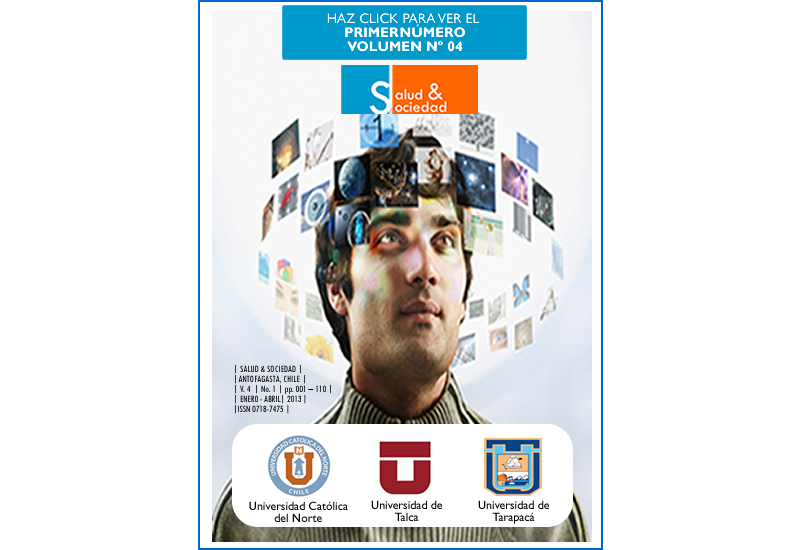De mujeres y neomujeres: Estudio sobre la percepción masculina del atractivo femenino.
DOI:
https://doi.org/10.22199/S07187475.2013.0001.00003Palavras-chave:
Estereotipo de género, atractivo, competencia, Gender stereotype, attractiveness, competence,Resumo
La relación hombre mujer ha variado a medida que las expectativas de género se han ido diversificando en el mundo moderno. Esta investigación evaluó el efecto de la competencia sobre la percepción masculina del atractivo femenino. La muestra estuvo compuesta por 80 varones, quienes participaron en un estudio con una fase experimental. Se les pidió evaluar el atractivo a dos mujeres, una femenina, y otra femenina y competente. Posteriormente contestaron un cuestionario sobre la misma temática. Ambos resultados indican que los hombres que adhieren al estereotipo femenino tradicional consideran más atractivas a las mujeres femeninas, mientras que los que no adhieren, prefieren a la mujer competente y femenina. Se discuten las implicancias de estos resultados en las relaciones amorosas.
The male-female relationship has altered as the expectations of gender have developed and diversified in the modern world. This study assesses the effect of competence upon male perception of female attractiveness. The sample was composed of 80 male participants who took part in an experimental stage study. They were asked to evaluate the attractiveness of two types of women: one feminine and the other feminine and competent. Subsequently they were asked to answer a questionnaire about the same topic. Both results indicate that those male who adhere to the traditional feminine stereotype consider those feminine women more attractive while those who do not adhere to that stereotype prefer women who are both competent and feminine. Implications of these results are analyzed within the context of love relationships.
Downloads
Referências
Aronson, E., Willerman, Ben and Floyd, Joanne. (1966) The effect of a pratfall on increasing interpersonal attractiveness, Psychonomic Science, 4: 227-8.
Barberá, E. y Martínez, I. (2004) Psicología y género. España: Pearson Prentice Hall.
Baron, R. y Byrne, D. (2005) Psicología Social. Madrid: Pearson Prentice Hall.
Burin, M. (1998) “Estudios de género: reseña histórica”. En Género y familia. Buenos Aires: Paidós, Psicología profunda, pp. 10-29.
Burin, M. y Dio Bleichmar, E. (1996) Género, Psicoanálisis, Subjetividad. Buenos Aires: Paidós.
Buss, D. (1989) Sex differences in human mate preferences: Evolutionary hypotheses tested in 37 cultures. Behavioral and Brain Sciences, 12, 1-49.
Carreón, L. y Ortiz, G. (2005) Concepto de masculinidad/femineidad en profesoras de educación preescolar. Procesos Psicológicos y Sociales, 1.
Deaux, K. y Emswiller, T. (1974) Explanations of successful performance on sex-linked tasks: what is skill for the male is luck for the female, Journal of Personality and Social Psychology. 29:80-5.
Dio Bleichmar, E. (1997) La sexualidad femenina: de la niña a la mujer. Buenos Aires: Paidós.
Eagly, A. (1987) Sex differences in social behavior: A social-role interpretation, Mahmwah, NJ: Erlbaum.
Franzoi, S. (2007) Psicología Social. México: Mc Graw Hills Interamericana.
Heider, F. (1958) The psychology of interpersonal relations. New York: Wiley.
Money, J. y Erhardt, A. (1982) Desarrollo de la sexualidad humana: diferenciación y dimorfismo de la identidad de género. Madrid: Ediciones Morata.
Montoya, M. y Horton, R. (2004) On the importance of cognitive evaluation as a determinant of interpersonal attraction. Journal of Personality and Social Psychology, 86, 696-712.
Strassberg, D. y Holty, S. (2003) An experimental study of women´s Internet personal ads. Archives of Sexual Behavior, 32, 253-260.
Tracey, T. (2004) Levels of interpersonal complementarity: A simplex representation. Personality and Social Psychology Bulletin, 30, 1211-1225.
Twenge, J. (1997) Changes in masculine and feminine traits over time: A metaanalysis. Sex Roles, 36, 305-325.
Worchel, S., Cooper, J. , Goethals, G. y Olson, J. (2002) Psicología Social. México: Color S.A. de C.V.
Downloads
Publicado
Edição
Seção
Licença
Los autores continúan como propietarios de sus trabajos, y pueden volver a publicar sus artículos en otro medio sin tener que solicitar autorización, siempre y cuando indiquen que el trabajo fue publicado originariamente en Revista Salud & Sociedad (ISSNe:0718-7475).



_(1).png)





